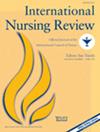A Real-World Study on the Morse Fall Scale and Clinical Judgment Method for Fall Risk in Adult Inpatients
Abstract
Aim
To compare the predictive performance of the Morse Fall Scale and the Clinical Judgment Method for Fall Risk for assessing fall risk among hospitalized adults using real-world data.
Introduction
Inpatient falls pose significant threats to patient safety and healthcare costs. While standardized tools like the Morse Fall Scale and the Clinical Judgment Method for Fall Risk are widely used, their comparative effectiveness in diverse clinical contexts requires further investigation.
Methods
This retrospective study analyzed inpatient data from a tertiary hospital between January 1, 2022, and December 31, 2023. Adult inpatients (≥18 years) with hospital stays ≥24 hours and available fall risk assessment records within 24 hours of admission were included. Patients with incomplete demographic or assessment data were excluded. Covariance analysis, receiver operating characteristic (ROC) curves, sensitivity, and other metrics were used to compare the predictive efficacy of both tools across different departments, genders, and age groups.
Results
A total of 206,846 inpatients were included, with male 48.3%(n = 99,885)andfemale 51.7% (n = 106,961) patients. Most were admitted to non-surgical departments (56.0%); 36.97% were evaluated using Clinical Judgment Method for Fall Risk, and 73.03% using the Morse Fall Scale. The overall fall incidence was 0.1%. For predicting inpatient falls, Clinical Judgment Method for Fall Risk demonstrated an area under the curve (AUC) of 0.602, while the Morse Fall Scale showed an AUC of 0.825. The Clinical Judgment Method for Fall Risk exhibited 100% sensitivity. Age significantly influenced fall risk and the assessment results of both tools, whereas gender showed no statistical significance across all indicators. Departmental differences were observed in fall events and Morse Fall Scale scores but did not affect Clinical Judgment Method for Fall Risk. The stratified analysis revealed that the Morse Fall Scale performed exceptionally well in surgical departments (AUC = 0.887) and among patients aged ≥75 years (AUC = 0.837).
Discussion
The tools exhibit complementary strengths: the Morse Fall Scale provides detailed risk stratification capability, while the Clinical Judgment Method for Fall Risk offers efficiency for rapid screening. A two-stage model combining both approaches shows potential for enhancing risk assessment but requires further validation.
Conclusion
Both tools demonstrate good predictive performance for fall risk in adult inpatients and demonstrate complementary strengths in fall risk assessment. The Morse Fall Scale showed higher specificity and is better suited for detailed stratified management, while the Clinical Judgment Method offered higher sensitivity and efficiency for rapid screening and patients with a single high-risk factor for falls. Based on these findings, we propose that a two-stage “screening-confirmation” model combining both tools may enhance clinical fall risk management; however, this approach requires further validation in future studies.
Implications for nursing and health policy
This study highlights the importance of using standardized tools based on clinical context. Structured assessments can improve patient safety and reduce costs. While a two-stage screening-confirmation model shows promise, further validation is needed. Health policies should support the validation of combined assessment models to improve patient safety while containing healthcare costs through targeted risk management. Integration into electronic records and continued nurse training may enhance fall prevention efforts.


 求助内容:
求助内容: 应助结果提醒方式:
应助结果提醒方式:


